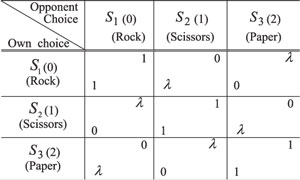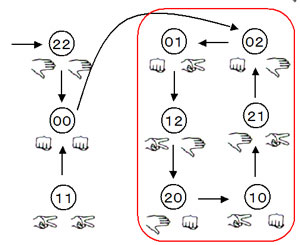Collective Intelligence and Evolution
by Akira Namatame
The mission of collective evolution is to harness the systems of selfish agents to secure a sustainable relationship, so that desirable properties can emerge as 'collective intelligence'.
Why do colonies of ants work collectively, and how do they do it so effectively? One key to answering this question is to look at interactions among ants. For the last decade, attempts have been made to develop some general understanding, which has produced the theory of collective systems, that is, systems consisting of a large collection of agents. It is common to refer to the desirable emergent properties of collective systems as 'collective intelligence'. Interactions are able to produce collective intelligence at the macroscopic level that is simply not present when the components are considered individually.
The concept of collective intelligence observed in social insects can be extended to humans. In his book, The Wisdom Of Crowds, Surowiecki explores a simple idea that has profound implications: a large collection of people are smarter than an elite few at solving problems, fostering innovation, coming to wise decisions, and predicting the future. His counterintuitive notion, rather than crowd psychology as traditionally understood, provides us with new insights for understanding how our social and economic activities should be organized.
On the other hand, the fact that selfish behaviour may not achieve full efficiency is also well known in the literature. It is important to investigate the loss of collective welfare due to selfish and uncoordinated behavior. Recent research efforts have focused on quantifying this loss for specific environments, and the resulting degree of efficiency loss is known as 'the price of anarchy'. Investigations into the price anarchy have provided some measures for designing collective systems with robustness against selfish behaviour. Collective systems are based on an analogous assumption that individuals are selfish optimizers, and we need methodologies so that the selfish behaviour of individuals need not degrade the system performance. Of particular interest is the issue of how social interactions should be restructured so that agents are free to choose their own actions, while avoiding outcomes that none would choose.
Darwinian dynamics based on mutation and selection form the core of models for evolution in nature. Evolution through natural selection is often understood to imply improvement and progress. If multiple populations of species are adapting each other, the result is a co-evolutionary process. However, the problem to contend with in Darwinian co-evolution is the possibility of an escalating arms race with no end. Competing species may continually adapt to each other in more and more specialized ways, never stabilizing at a desirable outcome.
The Rock-Scissors-Paper (RSP) game is a typical form of representing the triangular relationship. This simple game has been used to explain the importance of biodiversity. We generalize a basic rock-scissors-paper relationship to a non-zero-sum game with the payoff matrix shown in Table 1. In this triangular situation, diversity resulting from proper dispersal by achieving Nash equilibrium is not efficient, and the agents may benefit from achieving a better relationship.
|
In particular, we have examined the system of interactive evolving agents in the context of repeated RSP games, by considering a population of agents located on a lattice network of 20x20. They repeatedly play the generalized RSP game with their nearest eight neighbours based on the coupling rules, which are updated by the crossover operator. 400 different rules, one for each agent, are aggregated at the beginning into a few rules with many commonalities. The game between two agents with the learned coupling rule becomes a kind of stochastic process. The transitions of the outcome are represented as the phase diagram in Figure 1, and they converge into the limit cycle, visiting the Pareto-optimal outcomes: (0,1) (1,2) (2,0) (1,0) (2,1) (0,2). Therefore each agent learns to behave as follows: win three times and then lose three times. In this way, the agents succeed in collectively evolving a robust learning procedure that leads to near-optimal behaviour based on the principle of give and take.
The framework of collective evolution is distinguished from co-evolution in three aspects. First, there is the coupling rule: a deterministic process that links past outcomes with future behaviour. The second aspect, which is distinguished from individual learning, is that agents may wish to optimize the outcome of the joint actions. The third aspect is to describe how a coupling rule should be improved, using the criterion of performance to evaluate the rule.
In biology, the gene is the unit of selection. However, the collective evolutionary process is expected to compel agents towards ever more refined adaptation, resulting in sophisticated behavioural rules. Cultural interpretations of collective evolution assume that successful behavioural rules are spread by imitation or learning by the agents. This approach to collective evolution is very much at the forefront of the design of desired collectives in terms of efficiency, equity, and sustainability. Further work will need to examine how collective evolution across the complex socio-economical networks leads to emergent effects at higher levels.
Please contact:
Akira Namatame, National Defense Academy, Japan
Tel: +81 468 3810
E-mail: nama![]() nda.ac.jp
nda.ac.jp
http://www.nda.ac.jp/~nama



